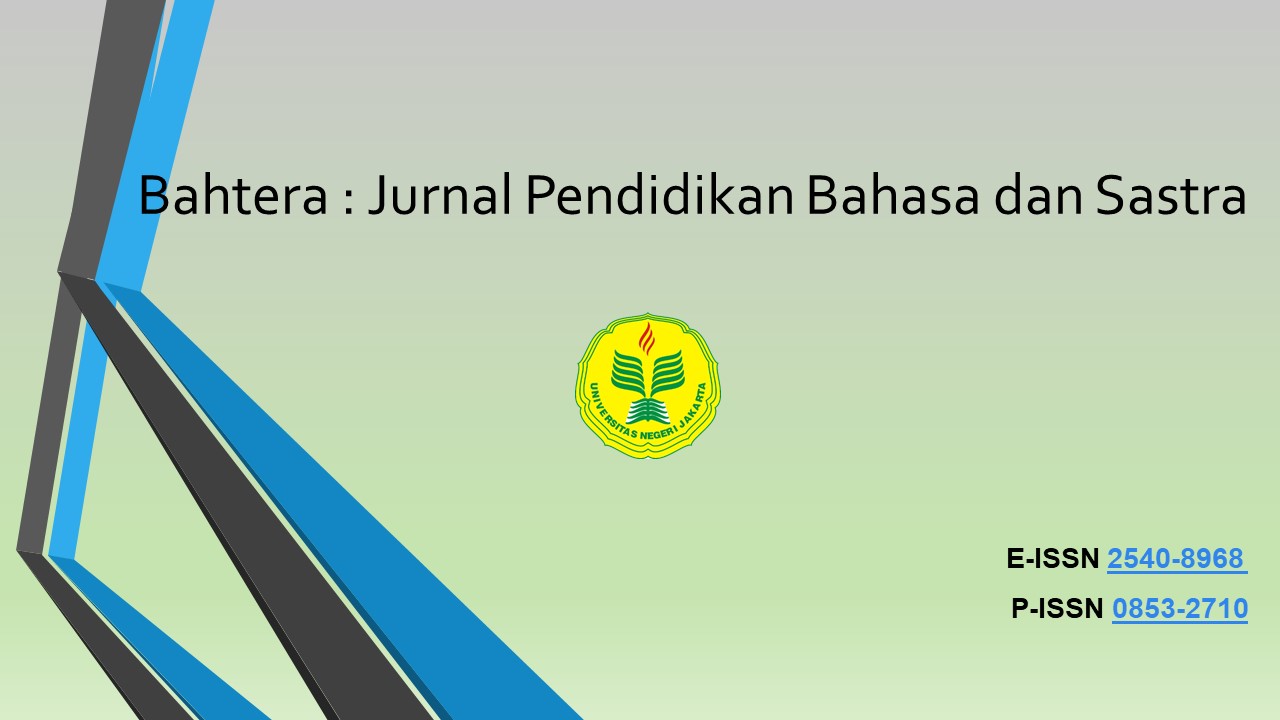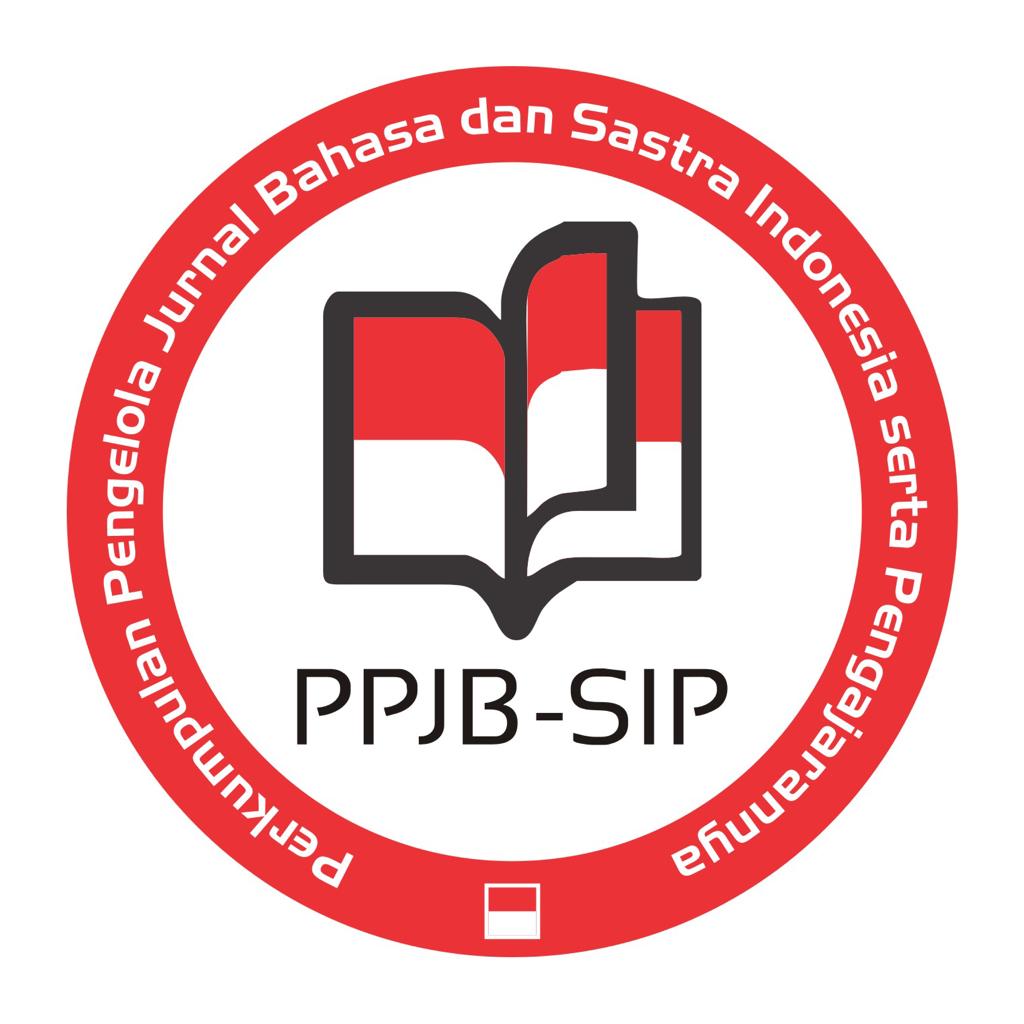VERBA TRANSITIF DALAM THREAD HOROR DI TWITTER @DARJOFESS
DOI:
https://doi.org/10.21009/bahtera.212.09Keywords:
Transitive Verbs, Twitter, SyntaxAbstract
This study discusses the production of transitive verbs, types of transitive verbs, the role of transitive verbs, and their grammatical meanings found in the horror thread on the Twitter account @darjofess. The horror thread that will be analyzed is entitled “An Strange Experience on the South Beach of Malang” which was uploaded on April 19, 2022. The research method used in this research is descriptive qualitative research and literature study. The data collection technique in this study was a read-note technique, and documentation in the form of screenshots which were then listened to intensively. The aims of this study are: 1) To find out the types of transitive verbs in the object of study in the form of a horror thread on Twitter and social media; 2) Knowing the type of transitive verb role in the object of study in the form of a horror thread on Twitter social media. The results of this study indicate there are 27 transitive verbs dominated by affix composition (meN-), that is mem-, meng-, meny-, men-, me-; 17 monotransitive verbs and 10 dwitransitive verbs are found, the role of predicate function filler in transitive verbs which is found entirely is the role of action
References
Abubakar, R. (2021). Pengantar Metodologi Penelitian. Yogyakarta: SUKA-Press UIN Sunan Kalijaga.
Alyusi, Shiefti Dyah. (2016). Media Sosial: Interaksi, Identitas, dan Media Sosial. Jakarta: Kencana.
Chen, G. M. (2011). Tweet this: A uses and gratifications perspective on how active Twitter use gratifies a need to connect with others. Computer in Human Behavior, 27(2), 756. https://doi.org/10.1016/j.chb.2010.10.023
Fitriani. (2017). Analisis Pemanfaatan Berbagai Media Sosial sebagai Sarana Penyebaran Informasi bagi Masyarakat. Jurnal Paradigma. 19(2): 148—152. https://doi.org/10.31294/p.v19i2.2120
Giovani, Angelina Puput., dkk. (2020). Analisis Sentimen Aplikasi Ruang Guru di Twitter Menggunakan Algoritma Klasifikasi. Jurnal Teknoinfo. 14(2): 116—124. https://doi.org/10.33365/jti.v14i2.679
Izzudin Mustafa, Tubagus Kesa Purwasandy, & Isop Syafe’i. (2020). Kata Kerja Transitif dan Intransitif dalam Bahasa Arab dan Bahasa Indonesia (Studi Linguistik Kontrastif). Studi Arab, 11(1), 1–12. https://doi.org/10.35891/sa.v11i1.1891
Maulana, A. A., & Astari, R. (2020). Verba Transitif dan Intransitif: Analisis Linguistik pada Syair-syair Kutipan Syekh Imam Nawawi al-Bantani dalam Kitab Naṣā’iḥ al-‘Ibād. Maharat: Jurnal Pendidikan Bahasa Arab, 2(2), 71—89. https://doi.org/10.18196/mht.2218
Mirdayanti, I., Safa, N. A., & Kaharuddin, K. (2018). Analisis Kontrastif Pembentukan Verba Bahasa Arab dan Bahasa Indonesia serta Implikasinya dalam Pembelajaran Bahasa Arab. Jurnal Ilmu Budaya, 6(2), 258. https://doi.org/10.34050/jib.v6i2.564
Petrovic, S., Miles Osborne., Victor Lavrenko. (2010). Streaming First Story Detection with application to Twitter. Human Language Technologis: The 2010 Annual Conference of the North American Chapter of the ACL. 181.
Rahayu, U. P., Mandala, H., Setiawan, I., Indonesia, P. B., & Mataram, U. M. (2020). Variasi Verba Memukul Bahasa Sasak di Kecamatan Kediri: Kajian Metabahasa Semantik Alami. Jurnal Ilmiah Telaah, 5(2), 41—49. https://doi.org/10.31764/telaah.v5i2.2622
Rosliana, L., & Yunadi, N. P. (2019). Sufiks Pembentuk Verba Transitif dan Intransitif dalam Bahasa Jepang. Kiryoku, 3(1), 17. https://doi.org/10.14710/kiryoku.v3i1.17-27
Satyawati, Made Sri., I Nyoman Kardana., Dewa Ayu Kadek Claria. (2021). Morpho-Semantic of Predicate in Indonesia. Journal of Language Teaching and Research, 12(6), 1082—1088. https://doi.org/10.17507/jltr.1204.24
Zafarani, R., Mohammad Ali Abrasi., Huan Liu. (2014). Social Media Mining An Introduction. UK: Cambridge University Press
Downloads
Published
How to Cite
Issue
Section
License
License & Copyright
This work is licensed under a Creative Commons Attribution 4.0 International License.










